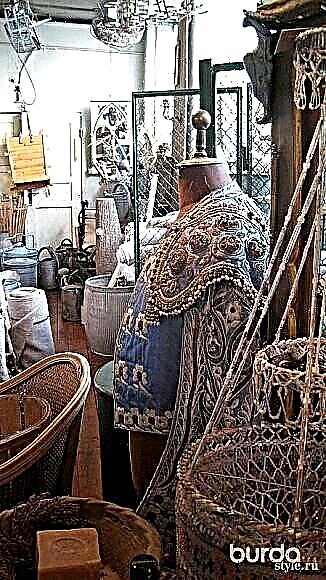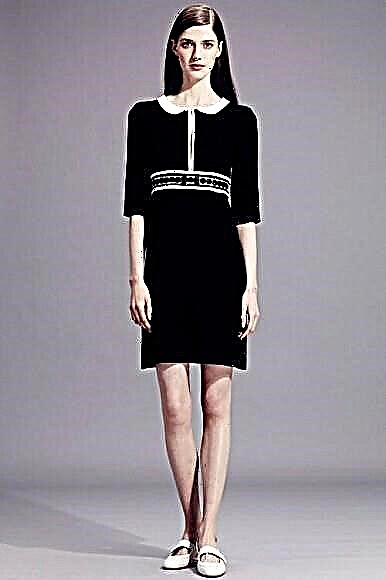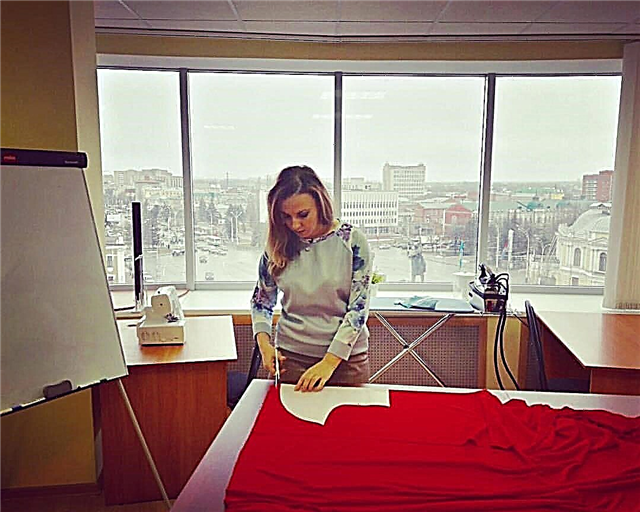The word "crepe", as the name of the fabric, has been entrenched in everyday life since Soviet times. But in fact it is not a fabric, but the general name of a group of fabrics with a special crepe effect and a visible relief surface.
Crepe in translation from French (crêpe) and Latin (crispus) means rough, wavy. This is a group of fabrics, mainly silk, produced from threads with a very large (crepe) twist, and also in some cases with special (crepe) weaves.

All crepe fabrics have a pronounced granular structure. This grit is easy to identify visually and tactilely, it is rough to the touch.
Alphabetical Fabrics
Crepe Twist Threads
In the production of silk crepe fabrics usually used simultaneously threads twisted to the right and left, which alternate in a certain way. Thanks to this (crepe) twist of the threads, the fabric acquires increased elasticity and strength, and in combination with a different twist direction, a finely rough, shadow effect on the silk surface is achieved. In addition, at the final stage of production, the crepe web is steamed. As a result, under the influence of water and high temperatures, the threads are unevenly untwisted, due to which a crepe effect is achieved - a granular texture of the fabric.
- Special offer

- 1
- 2
- 3
- 4
Shallow weave
In addition to silk fabrics with crepe weaving, crepes are also made from cotton, wool, wool mixture, artificial and synthetic threads. In these fabrics, the crepe effect, which creates a random convex texture, is achieved mainly due to various fine-knit interlacing of threads, in which they are not twisted, but simply woven in a special order, that is, without the crepe twist used for silk fabrics.
- Special offer

- 1
- 2
- 3
- 4
Properties and features of crepe fabrics

The main peak in the popularity of crepe fabrics was in the 60s of the last century. But today this material can boast of great demand due to its valuable qualities.
►All crepe fabrics are subject to severe shrinkage (up to 10 cm!), Always consider this fact when buying fabric.
► The crep does not tolerate high temperatures, therefore it requires careful and delicate care.
►All crepe fabrics are practically devoid of such a property as elasticity. The exception is crepe with the addition of elastane, as a rule, no more than 5% of the total fabric composition.
► Crepe fabrics are perfectly draped and have low creasing.
► The color of crepe fabrics is bright saturated, resistant to fading.
► For all its density and subtlety, crepe fabrics are quite heavy.
►Density, strength, wear resistance.
How to determine real silk or fake?
Types of crepe fabrics
Crepe de chine
The most famous and lightest and finest type of crepe fabric. It is made entirely from silk raw materials, and with the addition of synthetic fibers. Material with a matte surface, without pronounced crepe texture.
Georgette crepe
Thin, translucent, but at the same time dense silky fabric with a pronounced crepe texture. It has some hardness to the touch.
- Special offer

- 1
- 2
- 3
- 4
Wool crepe
Thick and thin woolen fabric with a textured granular surface and a noble matte sheen.
- Special offer

- 1
- 2
- 3
- 4
Crepe stretch
Thick crepe fabrics with added elastane. There are also two-layer specimens.
- Special offer

- 1
- 2
- 3
- 4
Crepe chiffon
A kind of natural silk or synthetic chiffon with a pronounced crepe effect on the surface of the fabric.
- Special offer
- 1
- 2
- 3
- 4
Crepe Jacquard (or Jacquard Crepe)
Dense silk fabrics with a double effect - coarse-grained with a relief pattern and crepe texture.
Satin Crepe
It is based on a satin weave of threads. From the front side the fabric is smooth, with a glossy sheen, and from the inside - matte, with a rough crepe surface.
- Special offer

- 1
- 2
- 3
- 4
What are twill and twill weave?
What to sew from crepe
A variety of products are sewn from crepe fabrics: dresses, blouses, skirts, suits, light coats.
- Special offer

- 1
- 2
- 3
- 4
- Special offer

- 1
- 2
- 3
- 4
- Special offer

- 1
- 2
- 3
- 4
- Special offer

- 1
- 2
- 3
- 4
- Special offer

- 1
- 2
- 3
- 4
Also, crepe fabrics are often used as a lining, in interior items, for example, they sew curtains or bed linen.The determining factor in choosing a particular model is the type of crepe fabric.
- Special offer

- 1
- 2
- 3
- 4
How to care for crepe fabrics
Crepe fabrics are very whimsical and to maintain their original qualities and appearance they need proper care.
► It is possible to wash products from crepe fabrics in the machine, but only in the delicate mode, using special detergents, at a temperature not exceeding 40 ° and without spinning.
► Drying is permissible only in natural conditions and when flattened.
►The products are sealed from the wrong side in a slightly damp state.



